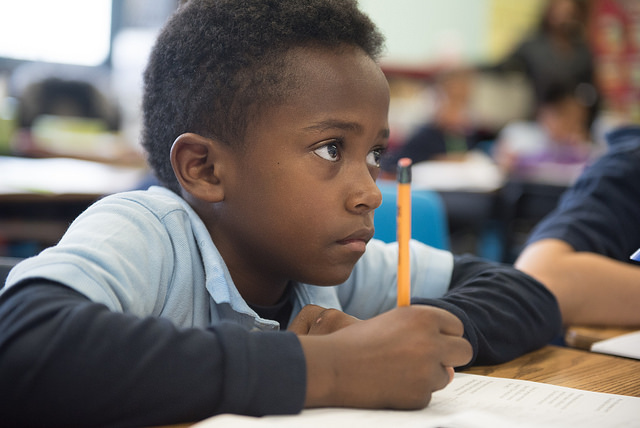Stereotype Threat:
What are the Impacts?
 By Catherine Good, Ph.D., Senior Research Scientist
By Catherine Good, Ph.D., Senior Research Scientist
In the first of our three-part series, we introduced the idea that stereotype threat is a situational predicament in which individuals fear they will confirm negative stereotypes about their group. That is, they worry they will be judged on the basis of a stereotype rather than on their own merits. The threat of confirming a stereotype has many consequences. Part two in this series will outline three of them, and illustrate how they can manifest in the classroom.
Achievement
Perhaps the most obvious impact of stereotype threat can be seen on test results – especially those that are high-stakes, such as the SAT and ACT, end-of-year state assessments or final school exams. Because these tests matter, the stakes of a potential poor performance are even higher. Thus, the pressure to disconfirm a negative stereotype can interfere with a student’s ability to perform to his or her potential. In fact, any test that purports to measure a student’s abilities sets the stage for stereotype threat that could disrupt performance.
Classroom practices that emphasize normative assessments (comparing an individual’s performance to others in a group) and celebrate only the highest performers rather than the steady improvers can establish a climate in which stereotype threat becomes an issue. The focus on measuring students, coupled with the relevant stereotype that one group of students (e.g., the girls in math class) is less capable than another group (e.g., the boys in math class) can temporarily establish a fixed-mindset for students in which they worry about proving their ability (and thus, proving the stereotype wrong) rather than improving their ability. And as we have documented in previous posts, a fixed mindset leads to a host of negative academic outcomes.
Executive Functions
As researchers began to understand the construct of stereotype threat more fully, they started asking the question, “What is the mechanism by which stereotype threat leads to underperformance?” The obvious suspects were executive functions, namely cognitive control functions that are necessary for concentration and thinking. One particularly useful executive function is working memory. Working memory is responsible for our ability to hold, process and manipulate information and essential for reasoning and decision making. But working memory has a limited capacity. The more it is used for one task, the less resources are available for another task. Researchers have shown that stereotype threat saps working memory capacity.
Stereotype threat can also impair executive functions by increasing the amount of stress children experience in the classroom. When the classroom climate heightens stereotype threat, the stress response can become chronic for some students. Stress has been shown to impede healthy brain development, including the centers of the brain that house working memory and executive functions.
Stereotyped students tend to actively monitor their performance, perhaps as a way to be vigilant for potential pitfalls or possibilities of confirming the stereotype. These monitoring processes can use up working memory resources, leaving less available for the task at hand. Finally, stereotype threat leads to increased negative thoughts and emotions that students actively attempt to suppress. Have you ever tried not to think of something? It has the ironic effect of making that something actually more prevalent in your mind while also eating up cognitive resources. In sum, stereotype threat disrupts the cognitive processes that allow us to effectively access and use our knowledge. The result is reduced achievement.
The Learning Process
The effects of stereotype threat on academic performance have been well documented, but what about the impact of negative stereotypes on learning? Might stereotype threat disrupt the learning process in much the same way it disrupts performance? Preliminary research says yes. And when learning is impaired, this can lead to real deficits in knowledge over time.
Making errors is a natural part of the learning process and is often accompanied by an emotional response. Most people are able to down-regulate that emotional response and quickly direct attention back to the learning task. But for those under stereotype threat, the emotional response to mistakes not only leads them to withdraw effort and engagement in the learning process, but also makes those efforts less effective. In other words, under stereotype threat emotions block the path to learning. Learning outcomes are also directly impacted by stereotype threat. For example, girls learn less mathematics when the context of learning includes stereotype threat than when the context is less threatening. So in reality, , stereotype threat not only disrupts the ability to effectively access and use knowledge, it also disrupts the ability to build that knowledge.
These are just a few examples of how stereotype threat can undermine efforts to teach students and help them reach their potential. I encourage you to share your thoughts on Twitter with @Turnaround #The180. We are curious to learn how you have seen or defeated stereotype threat in your classroom, and if there are other topics you wish we would explore further. Stay tuned for the final entry of this three-part series where we will discuss easy-to-implement classroom-based solutions that can help make your stereotyped students become ready, engaged learners.

Share This Story